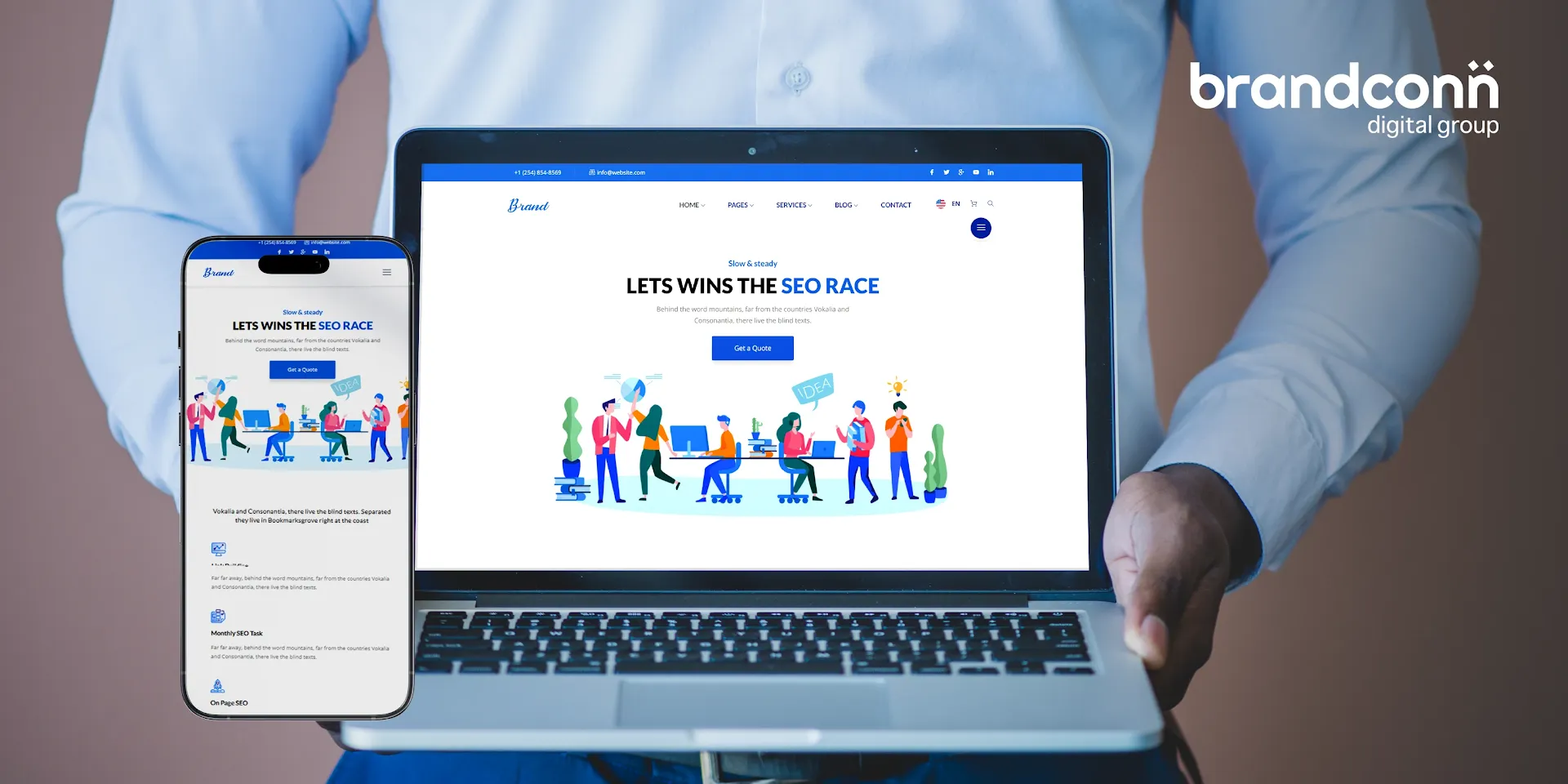
When building an online presence, many businesses focus all their energy on keywords, backlinks, and content creation. While these are crucial, there’s one critical factor that often gets overlooked — website design. Your site’s structure, speed, and usability directly affect how search engines rank your pages.
As a trusted website design company in India, we’ve seen how smart design choices elevate rankings, while poor design can bury even the best content.
Let’s dive into why website design matters for SEO and how you can make sure your site works hard for your rankings.
Why Website Design Matters for SEO?
Search engines like Google want to show users websites that offer a great experience. If your site loads slowly, is difficult to navigate, or looks outdated, visitors will leave quickly. Google tracks these signals and adjusts rankings accordingly.
Good website design keeps visitors engaged, reduces bounce rates, and sends strong quality signals to search engines. That’s why a well-designed website is more than just a pretty face — it’s a ranking asset.
Key Website Design Factors That Influence Rankings
| Website Design Factor | Impact on Rankings | Why It Matters |
|---|---|---|
| Mobile Responsiveness | High | Google uses mobile-first indexing, so responsive sites rank better. |
| Page Speed | High | Faster load times improve user experience and lower bounce rates. |
| Navigation & Structure | Medium-High | Easy navigation helps search engines crawl and index pages efficiently. |
| Visual Content Optimization | Medium | Properly optimized images and videos improve page load time and relevance. |
| Accessibility | Medium | Accessible sites reach more users and can boost SEO indirectly. |
Website Speed and Performance
Everyone hates waiting. Research shows a one-second delay in page load can reduce conversions by up to 7%. Search engines know this and factor speed into their algorithms.
To rank well, your website must load quickly on all devices. This means optimising images, using clean code, and leveraging caching. For practical tips, check out our guide on avoiding common SEO mistakes for better rankings.
Mobile-Friendliness
More than half of internet traffic worldwide comes from mobile devices. Google’s mobile-first indexing means it evaluates your mobile site before the desktop version for ranking purposes.
If your site isn’t responsive and mobile-optimised, you risk losing valuable search visibility. Our article on top website design trends in 2025 highlights the importance of mobile-first design.
User Experience (UX) and Navigation
Clear menus and logical page structures aren’t just user-friendly — they also help search engines crawl your site efficiently. Visitors should find key information within two or three clicks, or risk bouncing.
If you’re unsure how to choose a design partner who understands UX, see our post on questions to ask before hiring a web design company.
Visual Appeal and Branding
While Google doesn’t directly rank your site on how “pretty” it looks, a professional design builds trust. Users who trust your site stay longer, share more, and convert better — all positive ranking signals.
Discover more on the SEO benefits of great design in our benefits of having a well-designed website article.
SEO Elements Influenced by Website Design
On-Page SEO Readiness
A quality design supports SEO features like:
- Easy editing of meta tags
- SEO-friendly URLs
- Proper heading hierarchy (H1, H2, H3)
- Schema markup for rich snippets
If your current site isn’t optimised, you might consider a redesign. Learn when to choose website design vs. website redesign.
Content Placement and Readability
Good design presents content in bite-sized, readable chunks. Short paragraphs, strategic whitespace, and clear headings keep visitors engaged and help search engines understand your content better.
Explore how AI tools assist in creating better content layouts in our role of AI in modern web design blog.
Core Web Vitals: A Table for Quick Reference
Google’s Core Web Vitals are crucial for rankings. Here’s what you need to know:
| Metric | What It Measures | SEO Impact | Ideal Benchmark |
|---|---|---|---|
| Largest Contentful Paint (LCP) | How fast main content loads | Faster = better user experience | Less than 2.5 seconds |
| First Input Delay (FID) | Time to interactivity | Quick response improves engagement | Less than 100 ms |
| Cumulative Layout Shift (CLS) | Visual stability | Less unexpected movement improves trust | Less than 0.1 |
Common Design Mistakes That Hurt Rankings
Many businesses unknowingly hurt their SEO by:
- Using large, uncompressed images or videos
- Adding too many scripts or animations that slow loading
- Ignoring web accessibility standards
- Neglecting regular design updates and audits
Balancing creativity with performance is key — our post on importance of scrolljacking in modern design explores how to achieve this.
How to Ensure Your Website Design Supports SEO?
- Work with an experienced website design company in India that understands SEO fundamentals.
- Prioritise speed optimisation techniques like compression and CDN use.
- Adopt responsive design tested across devices.
- Structure content clearly with proper headings and internal links.
- Regularly audit and update your site to adapt to changing algorithms.
If outsourcing, our tips to outsource web design will help you avoid common pitfalls.
Conclusion
So yes, website design affects search engine rankings far more than most realise. It’s not just about making your site look good — it’s about creating a fast, accessible, and user-friendly platform that search engines love.
Working with a professional website design company in India that understands this synergy is your best bet for online success.
After all, the UK & US brands that prefer an Indian website design company aren’t just cutting costs — they’re investing in smart, SEO-friendly design that performs.


